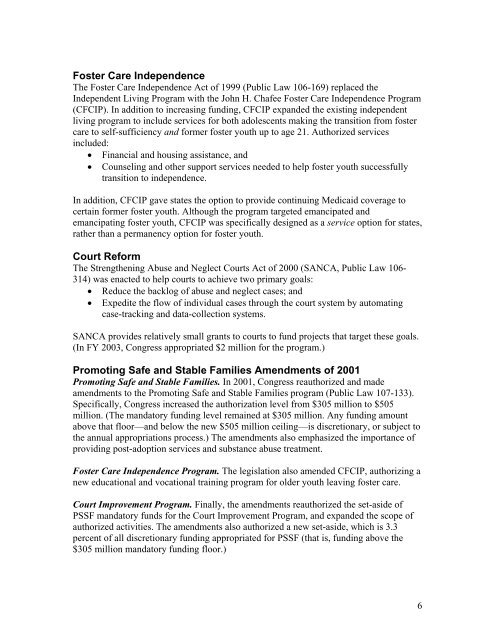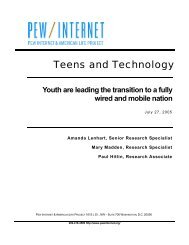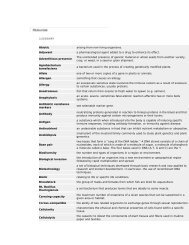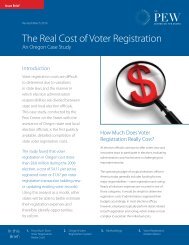Report: A Brief Legislative History of the Child Welfare System
Report: A Brief Legislative History of the Child Welfare System
Report: A Brief Legislative History of the Child Welfare System
You also want an ePaper? Increase the reach of your titles
YUMPU automatically turns print PDFs into web optimized ePapers that Google loves.
Foster Care Independence<br />
The Foster Care Independence Act <strong>of</strong> 1999 (Public Law 106-169) replaced <strong>the</strong><br />
Independent Living Program with <strong>the</strong> John H. Chafee Foster Care Independence Program<br />
(CFCIP). In addition to increasing funding, CFCIP expanded <strong>the</strong> existing independent<br />
living program to include services for both adolescents making <strong>the</strong> transition from foster<br />
care to self-sufficiency and former foster youth up to age 21. Authorized services<br />
included:<br />
• Financial and housing assistance, and<br />
• Counseling and o<strong>the</strong>r support services needed to help foster youth successfully<br />
transition to independence.<br />
In addition, CFCIP gave states <strong>the</strong> option to provide continuing Medicaid coverage to<br />
certain former foster youth. Although <strong>the</strong> program targeted emancipated and<br />
emancipating foster youth, CFCIP was specifically designed as a service option for states,<br />
ra<strong>the</strong>r than a permanency option for foster youth.<br />
Court Reform<br />
The Streng<strong>the</strong>ning Abuse and Neglect Courts Act <strong>of</strong> 2000 (SANCA, Public Law 106-<br />
314) was enacted to help courts to achieve two primary goals:<br />
• Reduce <strong>the</strong> backlog <strong>of</strong> abuse and neglect cases; and<br />
• Expedite <strong>the</strong> flow <strong>of</strong> individual cases through <strong>the</strong> court system by automating<br />
case-tracking and data-collection systems.<br />
SANCA provides relatively small grants to courts to fund projects that target <strong>the</strong>se goals.<br />
(In FY 2003, Congress appropriated $2 million for <strong>the</strong> program.)<br />
Promoting Safe and Stable Families Amendments <strong>of</strong> 2001<br />
Promoting Safe and Stable Families. In 2001, Congress reauthorized and made<br />
amendments to <strong>the</strong> Promoting Safe and Stable Families program (Public Law 107-133).<br />
Specifically, Congress increased <strong>the</strong> authorization level from $305 million to $505<br />
million. (The mandatory funding level remained at $305 million. Any funding amount<br />
above that floor—and below <strong>the</strong> new $505 million ceiling—is discretionary, or subject to<br />
<strong>the</strong> annual appropriations process.) The amendments also emphasized <strong>the</strong> importance <strong>of</strong><br />
providing post-adoption services and substance abuse treatment.<br />
Foster Care Independence Program. The legislation also amended CFCIP, authorizing a<br />
new educational and vocational training program for older youth leaving foster care.<br />
Court Improvement Program. Finally, <strong>the</strong> amendments reauthorized <strong>the</strong> set-aside <strong>of</strong><br />
PSSF mandatory funds for <strong>the</strong> Court Improvement Program, and expanded <strong>the</strong> scope <strong>of</strong><br />
authorized activities. The amendments also authorized a new set-aside, which is 3.3<br />
percent <strong>of</strong> all discretionary funding appropriated for PSSF (that is, funding above <strong>the</strong><br />
$305 million mandatory funding floor.)<br />
6
















